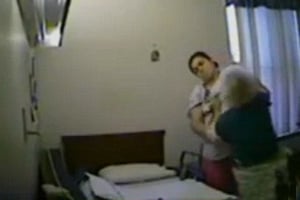
Nursing home abuse is among the most devastating of horrors targeting our older, vulnerable loved ones. Recently, a case in which a small camera—meant to catch a petty thief—caught a loved one being abused and taunted, increasing awareness of both elder abuse and the use of so-called “granny” cams. This case, known as the “Mayberry […]
 Nursing home abuse is among the most devastating of horrors targeting our older, vulnerable loved ones. Recently, a case in which a small camera—meant to catch a petty thief—caught a loved one being abused and taunted, increasing awareness of both elder abuse and the use of so-called “granny” cams.
Nursing home abuse is among the most devastating of horrors targeting our older, vulnerable loved ones. Recently, a case in which a small camera—meant to catch a petty thief—caught a loved one being abused and taunted, increasing awareness of both elder abuse and the use of so-called “granny” cams.
This case, known as the “Mayberry Case,” involved a 96-year-old woman, a dementia patient at an Oklahoma City facility, whose possessions were disappearing. Her daughter put a motion-activated camera in place. A couple of months later, the family reviewed the recordings and saw an aide stuffing latex cloves into the woman’s mouth as another aide teased her, tapping her on the head, and laughing. The pair picked her up from her wheelchair and tossed her on the bed and an aide performed what The New York Times’ Well blog described as “heavy-handed” chest compressions.
The case received attention and prompted Oklahoma to become the third sate to allow residents in long-term care facilities to maintain surveillance cameras in their rooms, according to Well. Mexico and Texas also permit the devices and, over the past two years, five other states have considered similar legislation
At issue are questions concerning liability and privacy rights. Yet, the government uses “granny cams,” according to Well. Last year, the New York state attorney general’s (AG) office—long known for its use of hidden cameras in patient abuse and neglect cases—revealed its methods during a national training program for state investigators.
This past June, Ohio state AG, Mike DeWine, announced that his office—with family permissions—placed cameras in residents’ rooms at a number of unnamed state facilities. DeWine has since moved to close at least one facility in which cameras caught actions that included an aide routinely leaving a stroke patient’s food by his incapacitated side, according to Well.
The recordings have helped in securing guilty pleas, and abuse has been recorded New Jersey, New York, Pennsylvania, Texas, and other states by loved ones who placed cameras, webcams, and iPhones in potted plants and radios, according to Well. Sadly, such monitoring is usually a last attempt by relatives who believe their loved ones are being abused but who are not receiving help from authorities. “Families are witnessing injuries and neglect of loved ones, and the only way to detect what’s happening is to use hidden cameras,” said Wes Bledsoe, the founder of A Perfect Cause, an Oklahoma-based group that tracks such cases nationwide, according to Well.
Meanwhile, secret resident monitoring is raising ethical and legal questions. For instance, some feel the cameras present an invasion of privacy to the resident, potential roommates, and visitors. “This is infringing on someone’s privacy arguably for their own benefit, ” said Nina A. Kohn, a law professor at Syracuse University, told Well. “We have to be especially careful that it’s justified.”
One issue involves a long-term care resident’s ability to consent to the recordings. Another, involves posting signs to alert staff and visitors about the monitoring; however, it is the secrecy of monitoring that has enabled families to record staff abusing family members, according to Well.
Mr. DeWine pointed out that if workers think they may be monitored but are not sure, that doubt may act as a deterrent. “Notice is not necessary,” he said, and “would defeat the purpose,” according to Well. According to Joseph DeMattos, president of the Health Facilities Association of Maryland, “Notification encourages transparency and reaffirms shared expectations for quality care.”


